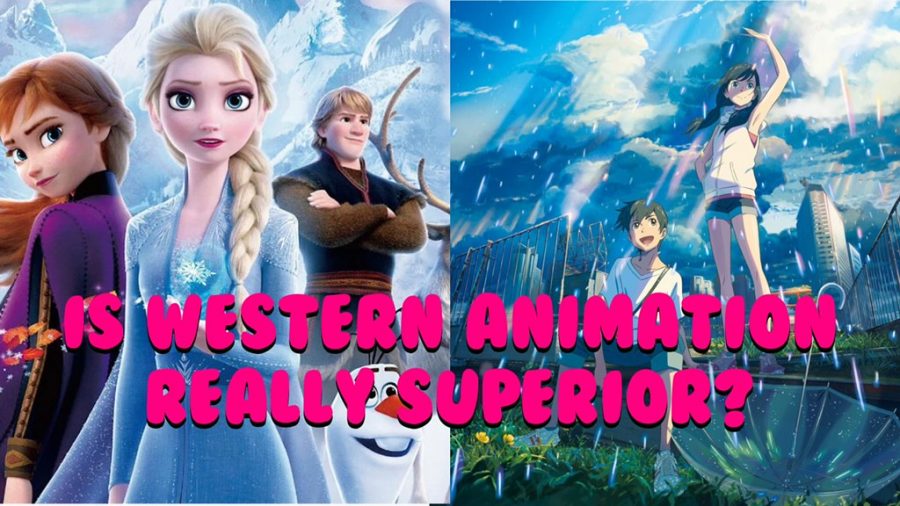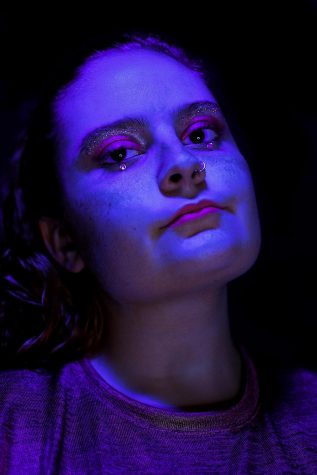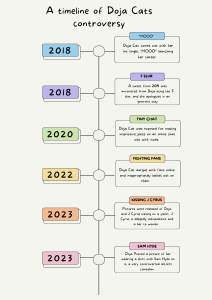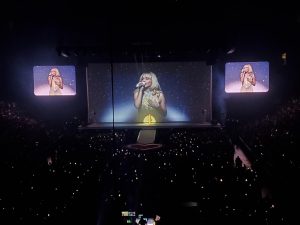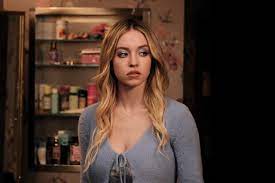Is Western Animation Really Superior?
November 16, 2020
When thinking of animation, most Americans place high-grossing and high-budget advertising companies on a pedestal, such as Disney and Pixar. These companies continually win Best Animation and Best Animated Short Film at the Oscars and continually have wins at the box office, so, therefore, they must be the best, right?
Whether American or International animation is better is subjective, the point still stands that most westerners blindly accept and follow these companies who churn out at least two films every year. The question must be asked if their success is well earned or not.
Although Disney and Pixar have the upper hand in mass marketing to American audiences, a few international films have slipped through the cracks and been successful with international audiences.
Japanese animated films such as Mirai, Your Name, and Weathering With You have been highly profitable in the U.S. and abroad. Other foreign animated films such as My Life as a Courgette (a French-Swiss movie), The Breadwinner (an Irish film), and Loving Vincent (a Polish-UK film) all have had profitable international releases and quickly became cult classics for their incredible imagery and storytelling.
Although a few foreign films have been nominated for Oscars for Best Animated Feature, only one has actually received the award. In 2002, Spirited Away, a Studio Ghibli film, was the first, and only, foreign language and hand-drawn film to win for the category, and it’s the current record holder for the longest film in the category at 125 minutes. This win established the partnership of John Lasseter, a former chief creative officer of Disney, Pixar, and Disneytoon Studios, and Hayao Miyazaki, the director of Studio Ghibli, to continue distributing Ghibli films to American audiences under Disney.
Under the distribution of Disney, many Ghibli films have had many American screenings, such as Ponyo (U.S. distribution in 2009) and The Secret World of Arrietty (U.S. distribution in 2012). Both films had well-known celebrities dubbing and promoting the movies releases in U.S. theatres.
Even though these distributions made the films widely accessible and appealing to American audiences, many of these films were overshadowed by the bombardment of Disney and Pixar films. Such as The Princess Frog and Up who came out the same year as Ponyo; Brave and Wreck-It Ralph both released the same year as The Secret World of Arrietty. It should come as no surprise that most children during these times recall seeing the Disney films more than Ghibli’s, even if they saw both in theatres.
The differences between foreign and domestic films don’t stop at the style of animation and processes, the plots are drastically different.
Whereas American films tend to focus on the plot (Will good triumph over evil? Will he get the girl? Will they escape the clutches of a serial killer?), foreign films tend to focus on character and let the plot take a backseat.
Taking a look at Spirited Away, for instance, the main character, Chihiro, loses her parents to a witch, has to work for the witch to get them back-a pretty simple concept. What makes the film great is the characterization.
After spending over two hours with the protagonist and a slew of colorful characters that have goals, ambitions, and real human emotions, it tends to feel like you’re losing a bit of yourself when the credits start to roll. Chihiro isn’t interested in being a hero, falling in love, or any of the main character traits of domestic films; Chihiro is a scared, alone, ten-year-old girl who just wants her parents. The film allows for her to grow into herself, she starts a classic nagging ten-year-old and leaves a strong independent girl who is ready for whatever changes the future holds. Hayao Miyazaki created this film for young girls to have a protagonist to look up to who doesn’t have some special power or something extraordinary that allows her to be the main character, she’s just a normal girl, which is what makes her all the more special-the ability to change and be dynamic.
Not only do foreign films tend to focus on characterization more than domestic films, they tend to focus on setting and pacing, more than perfection.
This focus of setting is no more evident than in Studio Ghibli films, where some of the best scenes are where nothing happens.
This can be seen in Spirited Away when Haku(a secondary character) takes Chihiro to see her parents, and afterward cries in front of a flower garden, and is comforted by Haku.
This scene is referred to as perfection because of the pacing, as Chihiro sees her parents for the first time since losing them; it is also the audience’s first time seeing them since then. This is an emotional scene of Chihiro crying out to her parents, not even sure if they understand or see her. She screams that she’ll find a way to save them and can’t bear it anymore; she breaks down and runs away. She knows she can’t save them now and has to leave them, and cries in front of a flower garden, comforted by a friend. This ten-minute scene of seeming nothingness allows for Chihiro to regain focus and to continue fighting for her parents’ freedom, but it also allows for the audience to pause and breathe. It allows for space.
There are many scenes like this in Spirited Away such as the nights where she talks with Lin, a woman looking after her, or during “The Six Station” scene. This train scene where nothing takes place allows for the feeling of time passing, as they travel along the railroad it allows for space as there just was a very intense chase scene. The emotional deep-toned music accompanied by the on-screen darkening of the sky and sleepiness of the characters allows for the audience to not just assume that they’ve been traveling for a while, but they actually see and feel the passage of time.
All in all, foreign films tend to pay attention to the pacing of scenes and allow for space, juxtaposed to American films who tend to action pack films, and cram as much as they can into an hour and forty-five minutes. This stretching of space and time allows for an immersive movie-watching experience and allows for a deeper connection to the characters and for the art to shine through, rather than plot.
If you were to ask someone which they find more realistic, Disney, or foreign producers such as Ghibli, they may be inclined to say Disney, even though they are sometimes cartoonish, Disney is known for its realistic animation and character design. Other foreign animation companies such as Ghibli are still created with hand-drawn animations. Someone physically drew what you see on screen, which juxtaposed with Disney who has switched over to computer animation and software to achieve photorealism.
I’d like to argue that the hand-drawn tendencies and physicality of Ghibli is more realistic than a bunch of ones and zeros. There is something human in the animation that software is unable to match, there’s a weight, a texture that is unmatched by computer animation. The fact that it was handmade and exists somewhere makes it all the more real for me, unlike the .jpeg existing on your hard drive, the human hand has touched it.
I don’t mean to bash computer animation. I like it as much as the next guy, but I undoubtedly prefer hand-drawn animation. It’s a dying art. The cost and timely process makes it extremely painstaking and tedious to create, but once it’s done, it’s otherworldly beautiful. As Disney and Pixar churn out movies every year it would be impossible for them to return to hand-drawn animation, not only do they currently have computer animators on staff, the length of time and quality to produce would be insurmountable with how many films they produce per year.
Personally, I would love it if they returned to their roots and started creating hand-drawn movies as they did in the 1950s, but we all know that will never happen with how profit-driven they are. So, I will continue watching foreign animation, even if I can’t see it in theatres.
Recommendations-
Grave of the Fireflies (1988)
Perfect Blue (1997)
Princess Mononoke (1997)
Akira (1988)
The Girl Who Leapt Through Time (2006)
The Secret of Kells (2009)
Mary and The Witch’s Flower (2017)
A Whisker Away (2020)

